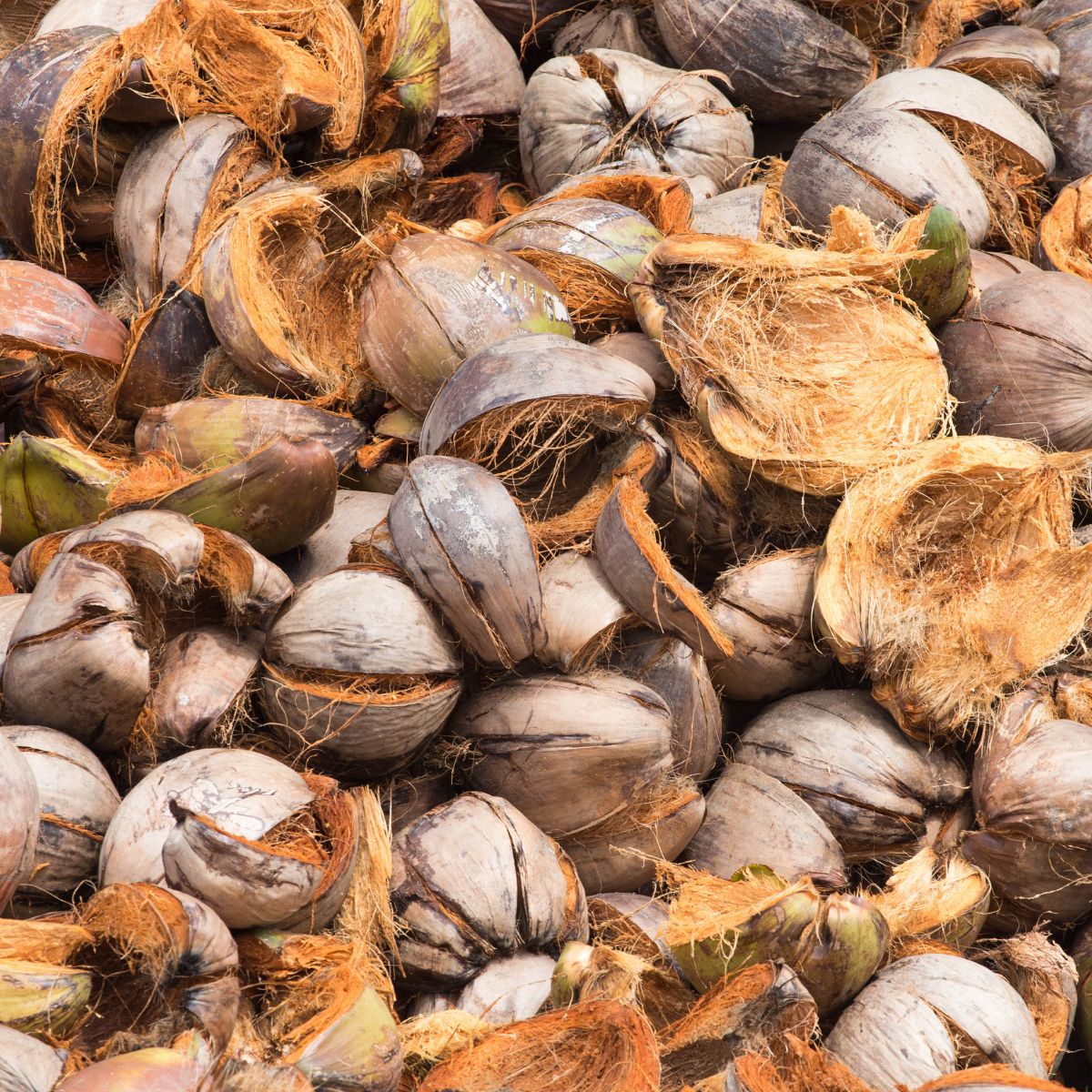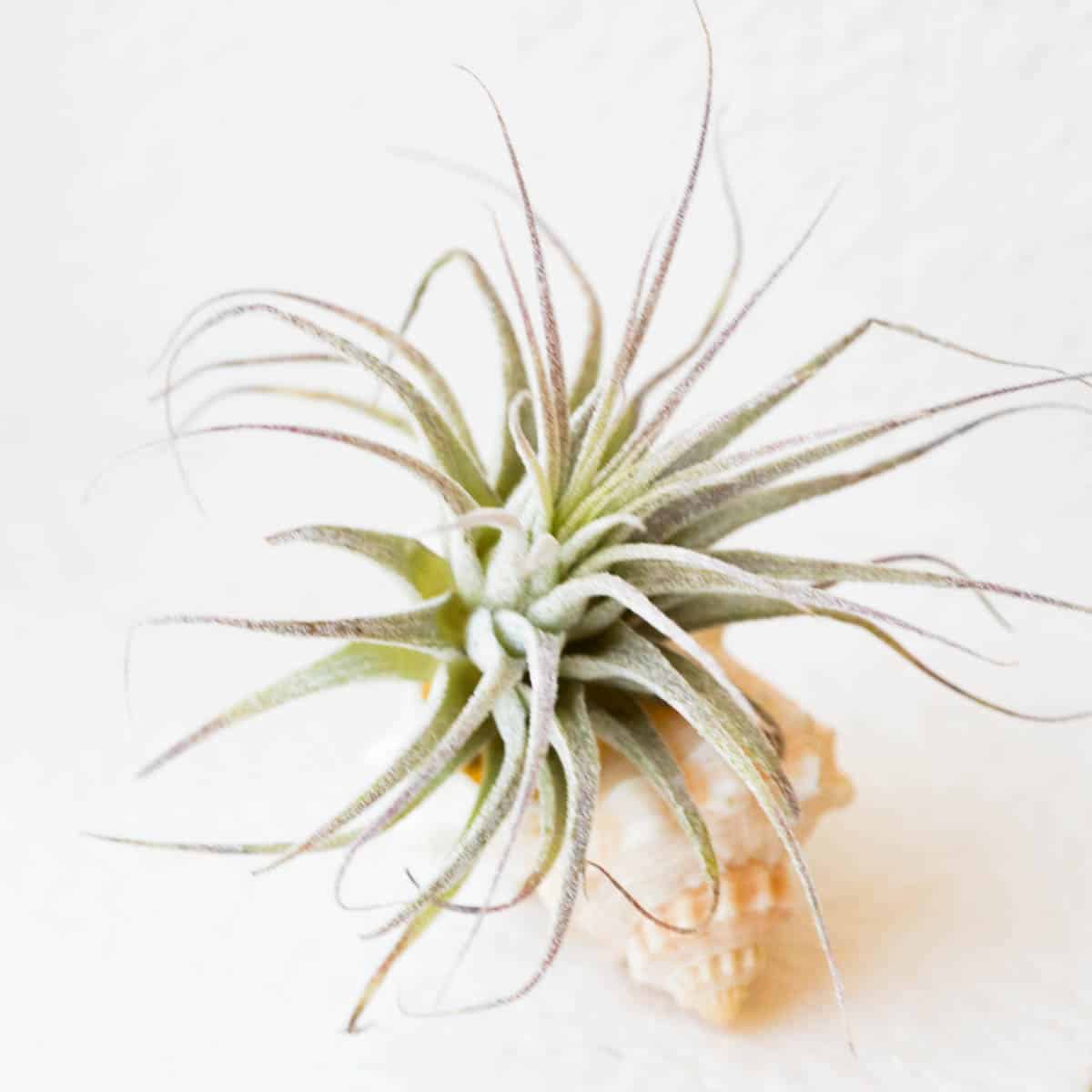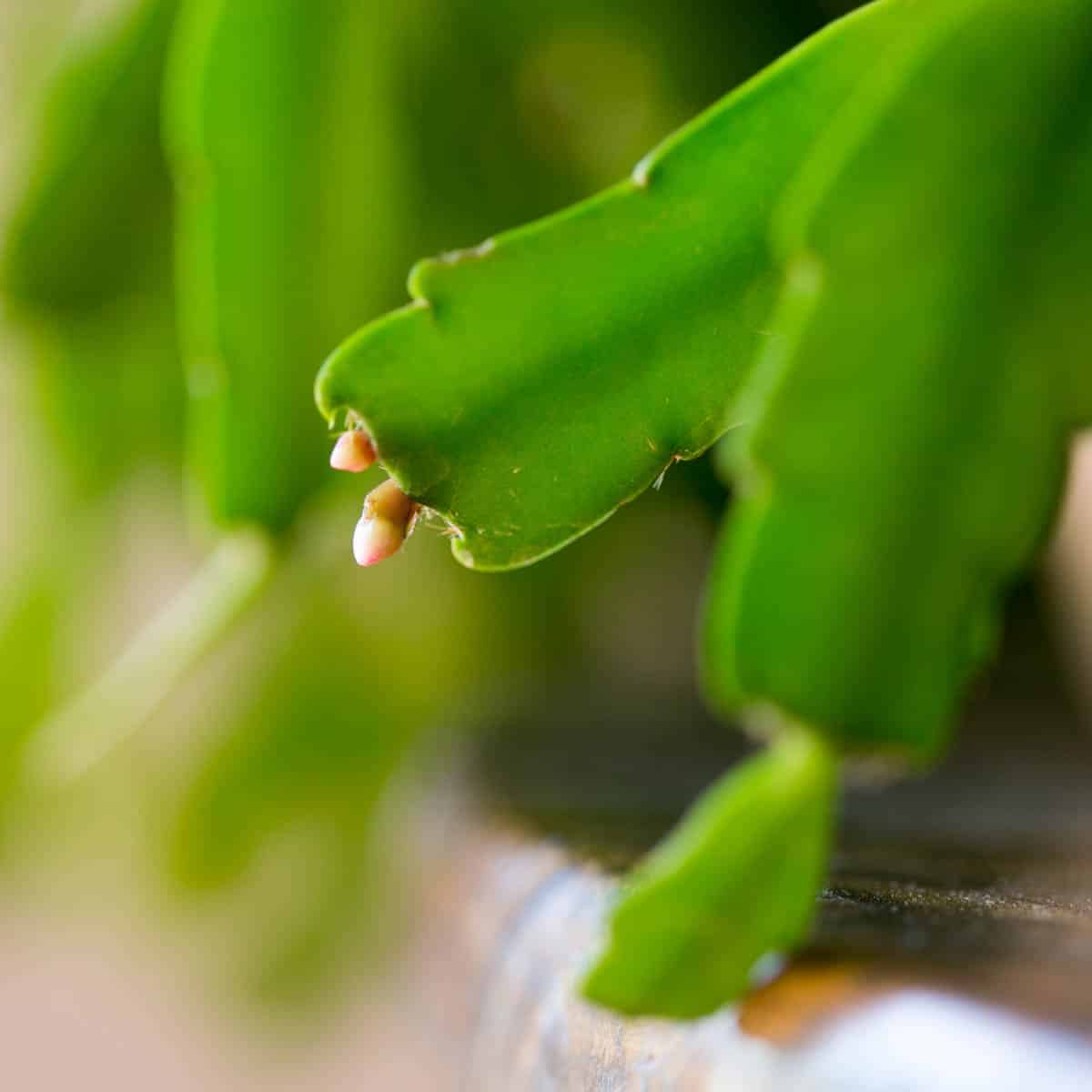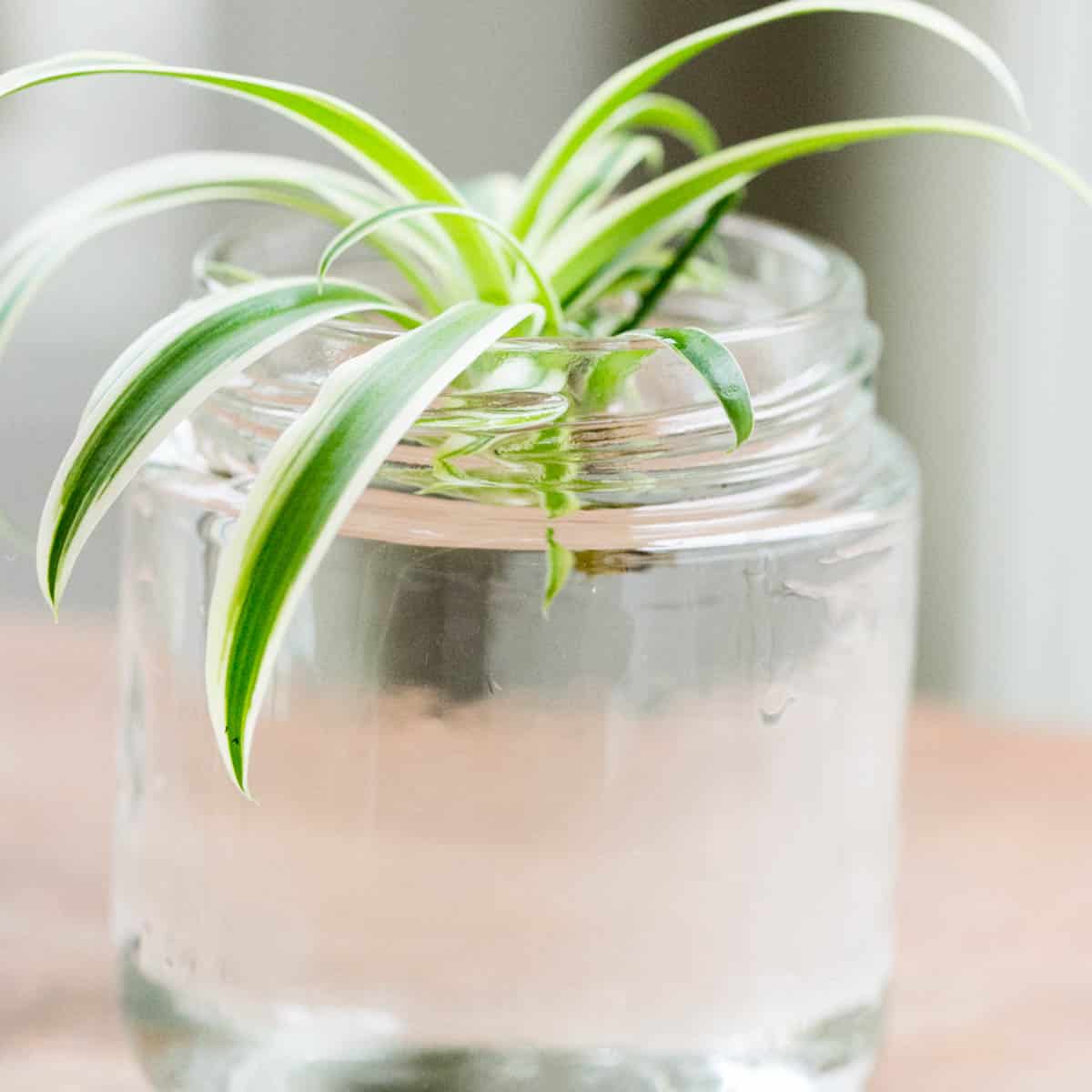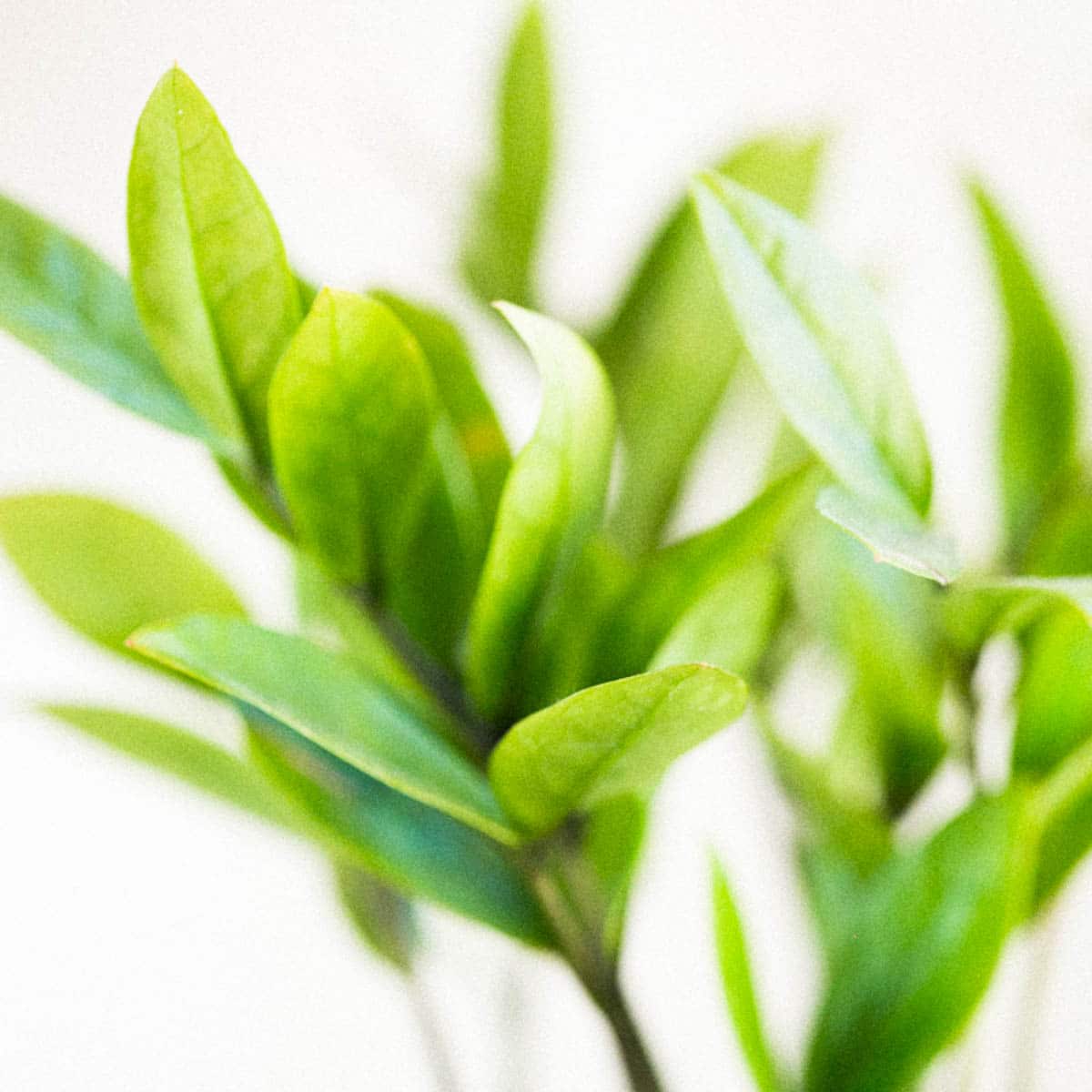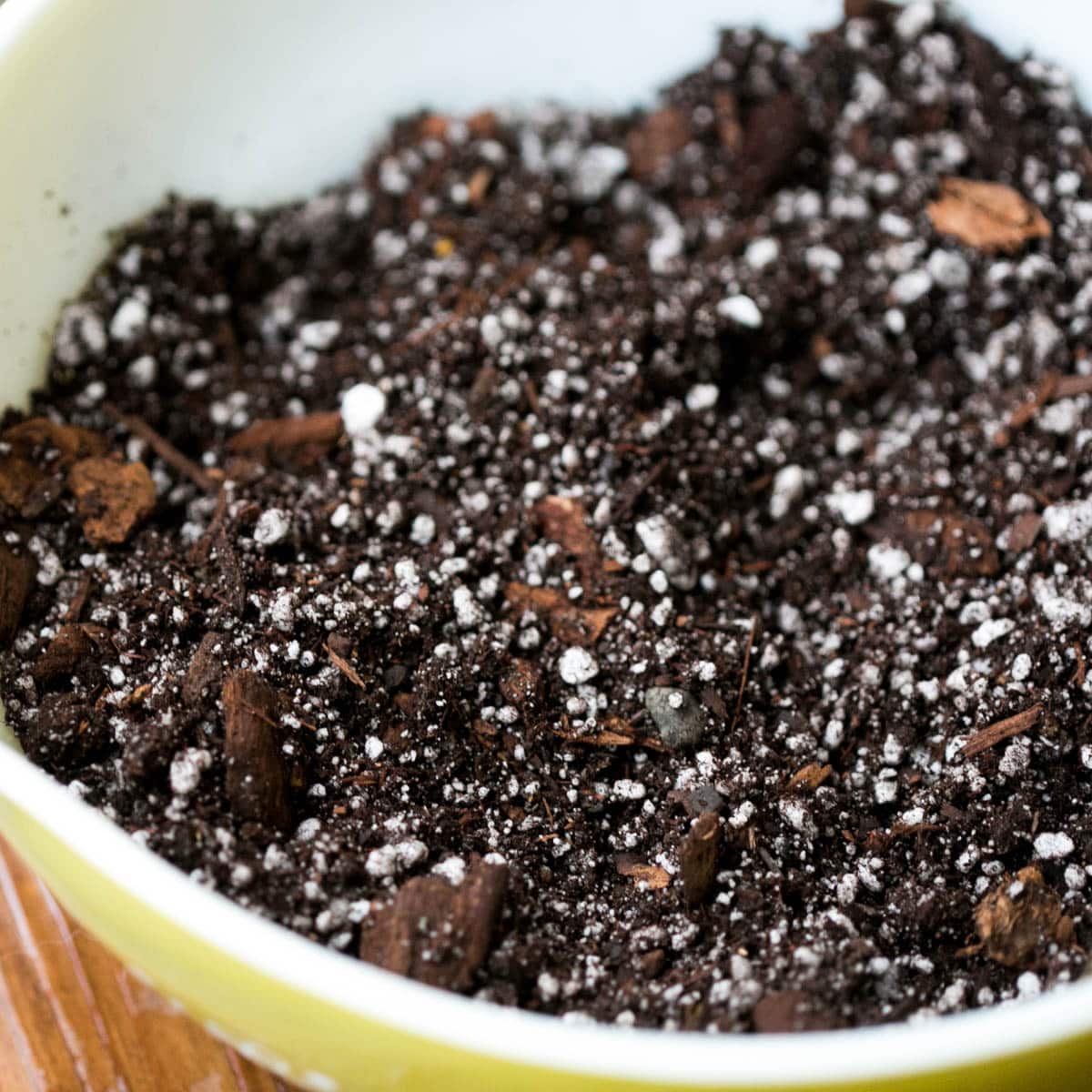11 Reasons Why Succulent Leaves Fall Off When Touched
Here are 11 of the most common reasons succulents leaves fall off when touched- and how to prevent it from happening to your plants!
Succulents are low-maintenance plants that require little water and lots of light. They are fairly easy to grow, but if they don’t receive the proper care you can end up with limp plants that are prone to losing leaves.

Luckily, it’s pretty easy to prevent the leaves from dropping off if you give your plants the proper care.
*This post contains affiliate links. If you click through and make a purchase, we may make a small commission at no extra cost to you. Thank you.
What Are Succulents?
Before we dive in, let’s get a clear picture of what succulents actually are….
Succulents are a family that encompass over 10,000 different varieties of plants. Their defining characteristic are thick, fleshy leaves that store water. They are drought resistant and adapted to dry environments, because their thick leaves and stems are able to store moisture.
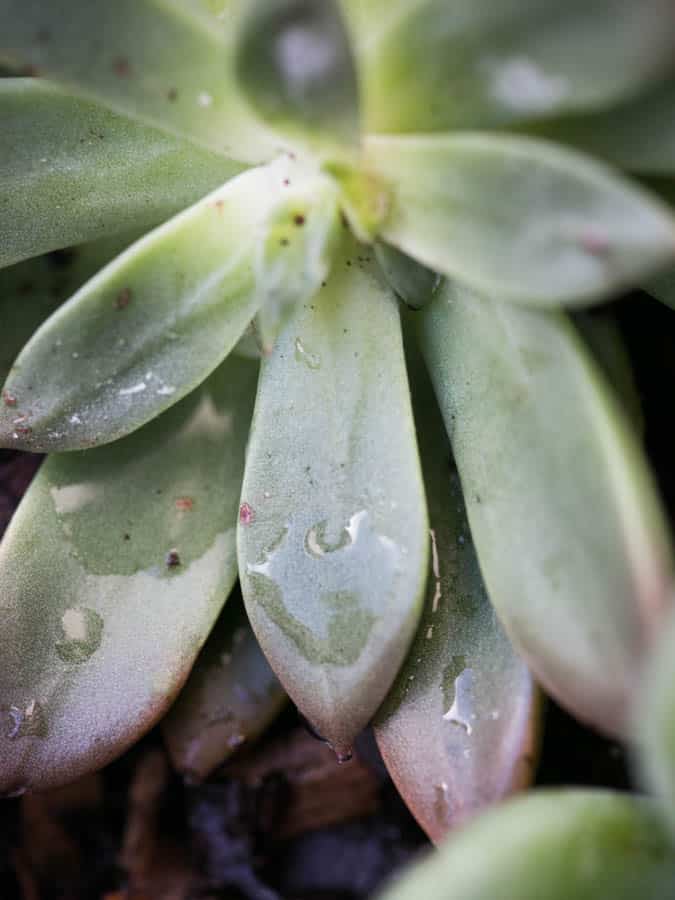
It’s essential to give them enough light and the right potting mix, temperature and humidity. These elements will give you healthy succulent plants that thrive and even grow new leaves!
A few varieties that are commonly grow indoors are Jade plant, aloe vera, and Thanksgiving cactus.
Reasons Leaves Fall Off When Touched
Here are our top reasons why your succulent leaves may be falling off when touched- and what to do about it!
1. Leaves Are Naturally Dying
According to succulent expert Cassidy from Succulents and Sunshine, succulents will naturally lose some of their leaves as part of their life cycle.
If only the bottom leaves are shriveling up and falling off, you have nothing to worry about. This is part of their natural life cycle and the old leaves will be replaced by new ones.
But if brand new leaves and top leaves are falling off, or if they have black or brown spots, there is something off in the plant’s environment. Read on for more tips.
2. Poor drainage
One of the primary reasons succulents lose leaves is because of poor drainage. Without adequate drainage excess moisture builds up in the soil, causing root rot and attracting pests!
The first step is to make sure the container you are using has drainage holes on the bottom of the pot.
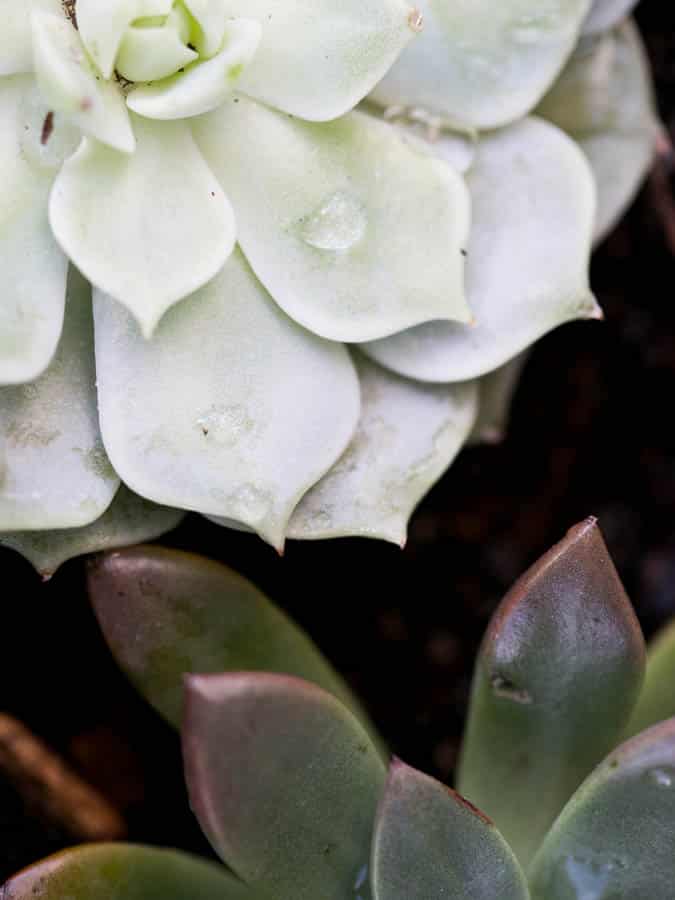
Succulents do not like soggy soil. Without good drainage root rot and fungal infection can spread throughout the entire root system, eventually leading to death of the entire plant.
Make sure to use a fast draining cactus soil that features elements like bark, pumice, and humus, as well as compost for essential nutrients.
If you think the soil you are using may be causing problems, go ahead and re pot your plant in a well draining potting soil.
3. Lack of Light
Some succulent varieties crave lots of direct sunlight and others like indirect light, so the most important thing is to understand what type of succulent you are growing and the needs it has for light.
Many succulent varieties crave direct sunlight. These succulents tend to live in hot arid environments with plenty of direct sun.
When not given enough sunlight, these sun loving varieties will soon have leaf drop.
If the succulent variety you are growing craves lots of sunlight, double check to make sure the room is filled with it. When not getting at least six hours of light a day, move the plant to an area that has natural bright light, like a southwest facing bathroom or a sun room.
If you are only have areas in your home that feature ambient light, then choose from one of the many succulent varieties that do well with more diffused lighting.
Many peperomia varieties, for example, are semi-succulent and thrive in bright, indirect light.
In general, succulents do not do well in low light areas- the exception being the resilient snake plant, which can survive with almost anything.
4. Extreme Temperatures
Extreme temperature fluctuations can upset any houseplant, and succulents are no different. Both overly high and low temperatures can cause problems for succulents.

Their ideal temperature range when grown indoors is between 40-80 degrees, which should be well within the temperature range in your home.
Cold temperatures can occur unexpectedly when a succulent is grown next to a window. Frigid air can seep in through the window and the temperatures in windowsills are often colder, especially on cooler days. (Don’t believe me? Just go sit next to your window on a frosty morning!).
Potted indoor succulents that are featured outside during the warm summer months need to be brought in to prevent them from being damaged by cold temperatures.
Freezing temperatures will upset your plant and will result in dead leaves that fall off when touched – make sure to bring outdoor succulents in before frosts begin!
Temperature fluctuations are a form of environmental stress and can greatly affect succulents, so make sure to keep a consistent temperature in your home- even if you are traveling and leaving your plants behind.
For best results, keep the temperature as consistent as possible and avoid sudden changes from hot to cold.
5. Excess Water
An over watered succulent plant will have soggy, almost clear (translucent) looking leaves.
Most succulents are naturally adapted to living in dry, arid environments. Therefore, an overly watered succulent will not be too happy.

Indoor succulents need to be watered about once a week, depending on the local conditions. From humidity levels to light, every growing environment is going to be slightly different. This is why it’s so important to pay attention to your plant prior to watering.
First check to make sure the soil is completely dry. You can do this in a few ways: by picking up your pot and seeing how heavy or light it is, using a soil moisture meter, or gently feeling the first few inches of soil with your finger.
Many houseplant enthusiasts love to hover over their plants, trying to encourage them to thrive (we’ve been there!). Over watering is perhaps one of the most common causes of fallen leaves.
To properly water your plant, use a small watering container so that you can apply a gentle stream of water at the base of your plant.
(Never drown or displace the soil with too much water).
Water beneath the lower leaves, thoroughly soaking your plant. After the soil has completely dried out, wait a few days and then water the plant again.
6. Root Rot
Over watering and lack of drainage can lead to a condition called root rot, where the roots of your succulent actually begin to decay from disease.
The first signs of root rot are wilty, yellowing leaves. An easy clue is the smell: a foul odor will start to emanate from the plant.
At this stage the succulent’s leaves may begin develop black spots.
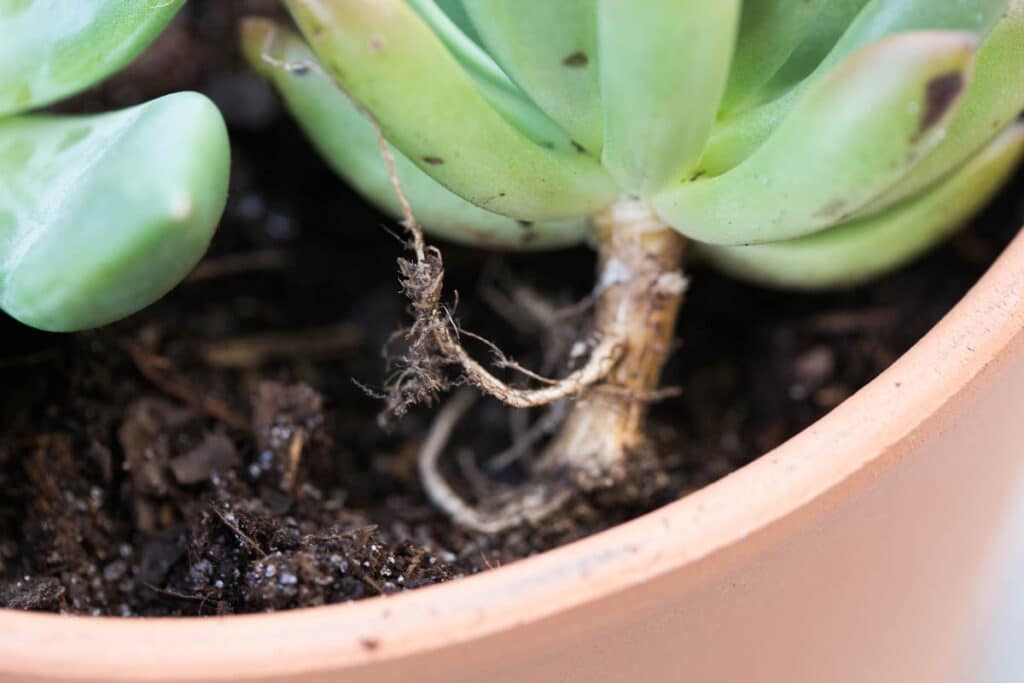
To verify rot, pull the roots out of the soil. Healthy roots will look white in color, whereas sick roots will be black and slimy.
If all of the roots are dark and slimy, you cannot save the succulent. If a few of the roots seem to have rot, cut them off and re pot your plant in well draining soil.
Make sure to follow our watering tips to make sure rot does not form in your plant again.
7. Not Enough Water
On the other hand, under watered succulents can also experience stress that will lead to the leaves shriveling up and dying.
When not receiving enough water, the leaves will begin to feel rubbery and thin, and may begin to rot from the outer edges inward. Wrinkly, shrinking leaves are a sign that your plants are thirsty!
Many succulents and succulent like plants are drought tolerant, but some prefer a consistent watering schedule. Water the plant once the top two inches of soil is dry.
Again, knowing the type of plant you have is essential for developing a watering plan well suited for their needs. A snake plant will need less water than a String Of Turtle!
Read about the best water for houseplants here.
8. Too Much Humidity
Humidity refers to the amount of moisture that’s in the air, and succulents typically come from dry, arid environments that have low to moderate humidity levels of about 40-50%.
Higher humidity levels can encourage the overgrowth of mold and bacteria, and this can lead to leaf loss.
Humidity varies greatly in different geographical locations and will even change from room to room in your home. To combat excess humidity make sure there is adequate air flow in the room your succulents are in.
You can also combat humidity by adding plants that naturally dehumidify the air, like pothos.
9. Root Bound Plant
A container that is too small can cause the plant to become root bound. This is where the roots essentially begin wrapping around themselves.
A root bound succulent will not be able to pull nutrients and water from the soil.
If you see roots growing out of the bottom of your pot, it’s a sure sign to size up to a larger succulent pot.

10. Damaged Leaves
Succulents may appear very hardy, but keep in mind that the leaves can be damaged. If they are played with or bumped often, it may loosen the leaf and cause them to fall off.
Some succulents are nearly indestructible, but its a good idea to keep your plants away from curious cats and kids.
11. Lack Of Nutrients In Soil
All plants in containers will eventually use up all the nutrients in the soil, and succulents are no different.
Lack of nutrients in the soil will eventually cause a succulent to go downhill, losing it’s leaves and dying. (This process can take a long time, however). Re pot your succulent with a quality potting mix full of nutrients, and fertilize sparingly to keep your plant healthy.
FAQ’s
Leaves on a succulent can fall off for many reasons. The first step to resolving leaf drop is to understand what variety of plant you have and their specific needs. Once you understand your plant’s needs, make sure it is not being subjected to harsh conditions. Lack of water, too much water, over fertilizing and lack of light can all affect your plant.
Over watered succulents will have clear leaves that are squishy and soft. They will be droopy and may have spots of rot on them. The leaves may also be falling off.
General Succulent Care
The best way to keep leaves from falling off a plant is to give them great care from the get go! Here’s our best tips for taking care of your beautiful succulent plants:
- Water succulents with care and thoughtfulness. Use a soil moisture meter like this one to test soil moisture before watering. Make sure your plant has excellent drainage.
- Give your plant the right kind of light for it’s species. Some succulents love bright, direct light and too much sunlight can be harmful for other varieties.
- Avoid temperature extremes, especially extreme cold, which will damage the plant cells.
Learn about the differences between succulents and air plants here.

